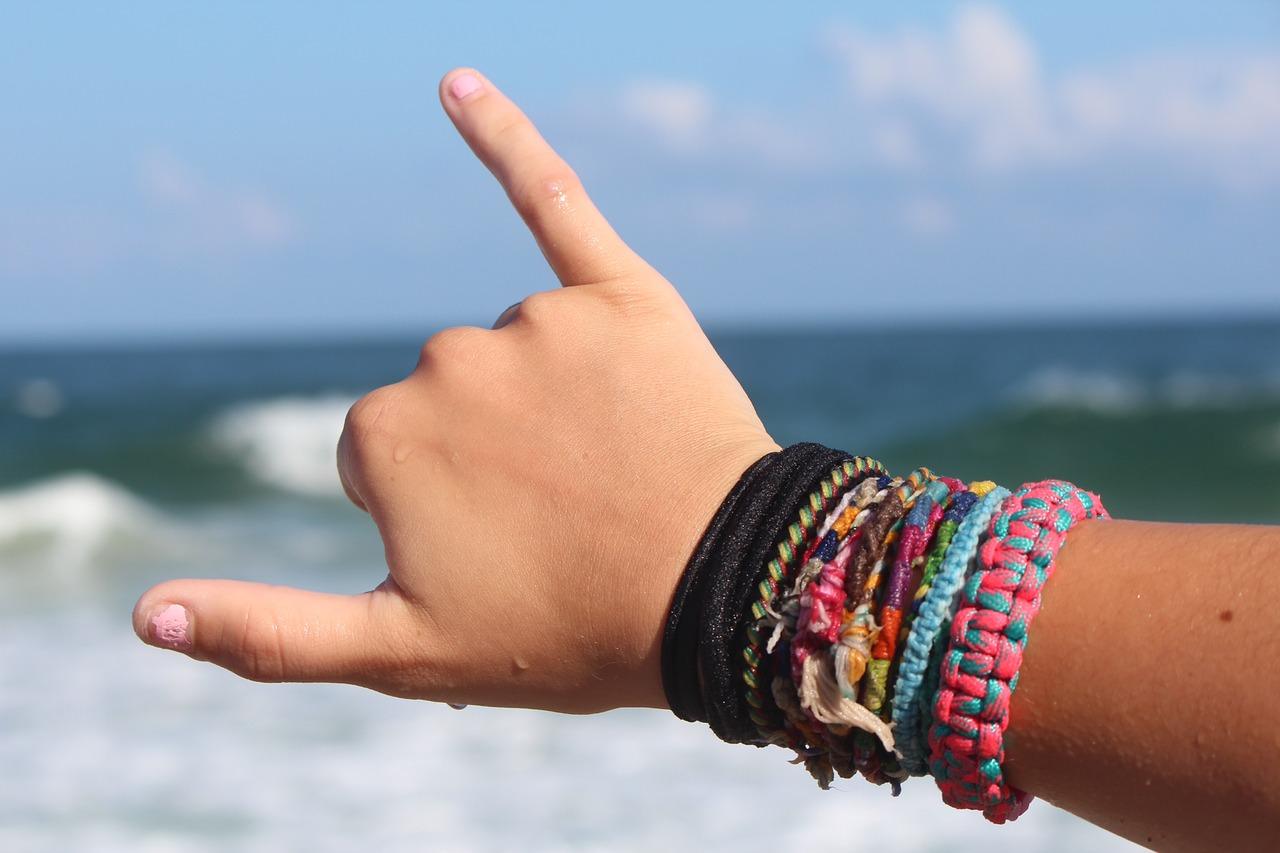M. Cameron for Royal Hawaiian Movers on the famous Hawaiʻian hand gesture. Sit back, relax and join us for a luxury tour experience on our Volcano Explorer Tour departing from Kona or Waikoloa. See the beauty and raw nature of the volcano in comfort.
Is there a more quintessential Hawaiʻi gesture than the shaka?
If you’ve never thrown one yourself, give it a try: Curl your middle three fingers toward your palm, then extend your thumb and pinky.
Now, making the gesture is easy. The real trick is to find your shaka style—and get comfortable with it.
The first few times you throw a shaka, it will probably feel stiff. With practice, though, you’ll find just the right amount of looseness and familiarity you need to use this gesture the way it was intended—to spread aloha.
If you’re already living in Hawaiʻi, you’ve probably seen the shaka in all kinds of situations, like:
- When a friend drives by you and gives you a shaka as a greeting. (On the mainland, you’d probably get a wave!)
- When you let someone in while you’re driving, and they show a shaka in thanks.
- When it’s election season and sign wavers are throwing shakas on the side of the road to encourage you to vote for their candidate.
- When you’re surfing, as a wordless greeting or an acknowledgement that life doesn’t get much better than this.
- When you’re scuba diving, to indicate that everything’s good or that you’re having an awesome time.
As you can see, the shaka can mean many things, including:
“Hi!”
“Thank you!”
“Aloha!”
“Howzit?”
“Yes!” / “Okay.” / “Shootz!”
“Everything’s good!”
It’s all about the context! Like the perfect shaka, the exact meaning of the gesture is a little loose. But when you see a shaka, there’s one thing that you can be sure of: the person sharing it with you wishes you well.
So, where did this gesture get its start?
The Origin of the Shaka
Talking story has long been a tradition in Hawaiʻi. A sacred one, in fact, that the Native Hawaiians used to pass on the myths, legends, and history of the people.
The shaka’s origin story starts with a man named Hamana Kalili, born in Laie, Oahu and employed at Kahuku Sugar Mill. He worked as a presser, which meant he fed sugarcane into a set of rollers that would squeeze out the juice. (Imagine an industrial-sized juicer.) One day, he got his hand stuck in the rollers, which crushed his three middle fingers.
Subsequently, the plantation gave him a job in security. In those days, plantations used trains to move sugarcane around, and Kalili’s task was to keep kids from jumping on the train at Kahuku Station. When he did encounter train jumpers, he would wave his distinctive hand at them, which, due to the accident, only had a thumb and pinky finger.
As time went on, the shaka—whose shape resembled Kalili’s damaged hand—came to represent the “all clear” sign, indicating that Kalili was not around.
You’ll hear this story all around Hawaiʻi, with some variation.
Kalili was also a community leader and a choir director at the Mormon Church in Laie. Today, he’s immortalized in a bronze statue outside the Polynesian Cultural Center in Laie, the town he lived in for his entire life.
But Where Did the Word “Shaka” Come From?
Although Hamana Kalili may have invented the gesture in the early 20th century, the name for the gesture came much later.
Contrary to what some people think, “shaka” is not a Hawaiʻian word. Instead, it’s believed that the word originates with Hawaiʻi’s “king of pidgin,” David “Lippy” Espinda. In addition to owning a used car lot and service station on Oahu, Espinda was also an entertainer and an actor who made appearances on Hawaiʻi Five-O and the Brady Bunch. His sign-off—”Shaka, brah!”—is credited with popularizing the term.
From there, Frank Fasi’s 1976 mayoral campaign, which leveraged a shaka icon—plus the explosion of Hawaiʻi surf culture—are both credited with moving the shaka into mainland and, subsequently, global consciousness.
How to Perfect Your Shaka
Is there a right way to do the shaka? Is there a wrong way? Mastering the shaka is really about making it feel comfortable for you: Not too loose, not too tight.
As you’ll see in Hawaiʻi, everyone’s got their own style. Some shakas are super loose, so loose that the middle fingers just barely dangle. Others are super tight, the gesture absolutely unmistakable.
Embrace the Shaka—and Hawaiʻi’s Spirit of Aloha
However you decide to approach the shaka, it’s almost always a good thing. It’s a great, casual way to spread aloha to those around you. And when you receive a shaka, it’s hard not to smile in appreciation for the people who live in this incredible place that many of us are lucky to call home.





